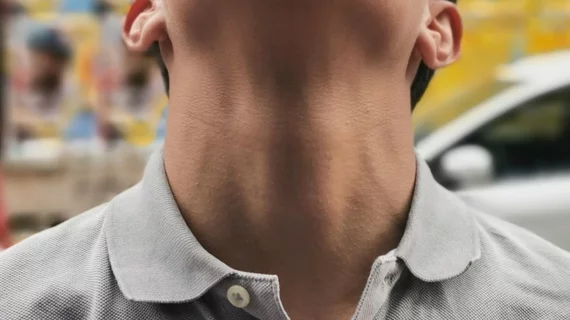'Radiologic serendipity' a common trigger event that ends in thyroid surgery in asymptomatic patients
In the United States, the incidence of thyroid cancer has increased threefold since the early 1990s. While advances in imaging certainly play a role, experts recently sought to appraise the extent of its significance.
The analysis posted this summer in JAMA Network, where researchers compared data from 1,328 patients who underwent thyroid-directed surgery at 16 centers in four countries [1]. Experts found that just 34% of these surgeries were performed on symptomatic patients, which shifted their focus to other potential modes of detection (MOD).
“Understanding the MOD can help us make inferences about whether incidence and mortality trends reflect a change in how we diagnose cancers and attribute deaths, or whether increases may be attributed to changes in the underlying pathophysiology of the disease, such as increased rates of a more aggressive disease evidenced by people presenting with symptoms,” corresponding author Mirabelle Sajisevi, MD, of the Department of Surgery and Division of Otolaryngology at University of Vermont Medical Center, and colleagues explained. “These data, in turn, can inform future recommendations to improve our ability to identify cancers that are likely to benefit from earlier intervention compared with those that may be managed more conservatively.”
Of the patients who were sent for surgery without thyroid-referable symptoms, “radiologic serendipity” accounted for 20% of trigger events, topping diagnostic cascade, patient-requested screening and clinician screening. Chest CT scans identified the highest amount of incidental nodules, at 31%. In comparison, PET scans detected 18%, while both neck CT and neck MRI spotted 16% each.
Ultrasound is a common MOD, but patients are typically referred for US exams after symptom presentation and/or clinician referral. The authors’ intention with this study was to focus on what happens before patients are referred for US evaluation.
“Focusing on the events that come before the diagnostic ultrasonography allowed us to determine whether the patient presented with thyroid referable symptoms, which might indicate that we were observing a true increase in thyroid cancer rates,” the authors explained.
Cancer was detected in 46% of the patients included in this study, half of which did not have symptoms attributable to the thyroid. The authors suggested that these findings indicate that incidental nodule detection has increased thyroid surgeries significantly but has not resulted in an increase in the true incidence of thyroid cancer. In turn, this can cause overtreatment, the authors suggested, adding that future work should focus on differentiating patients that would benefit from early intervention versus monitoring.
The research can be viewed here.

